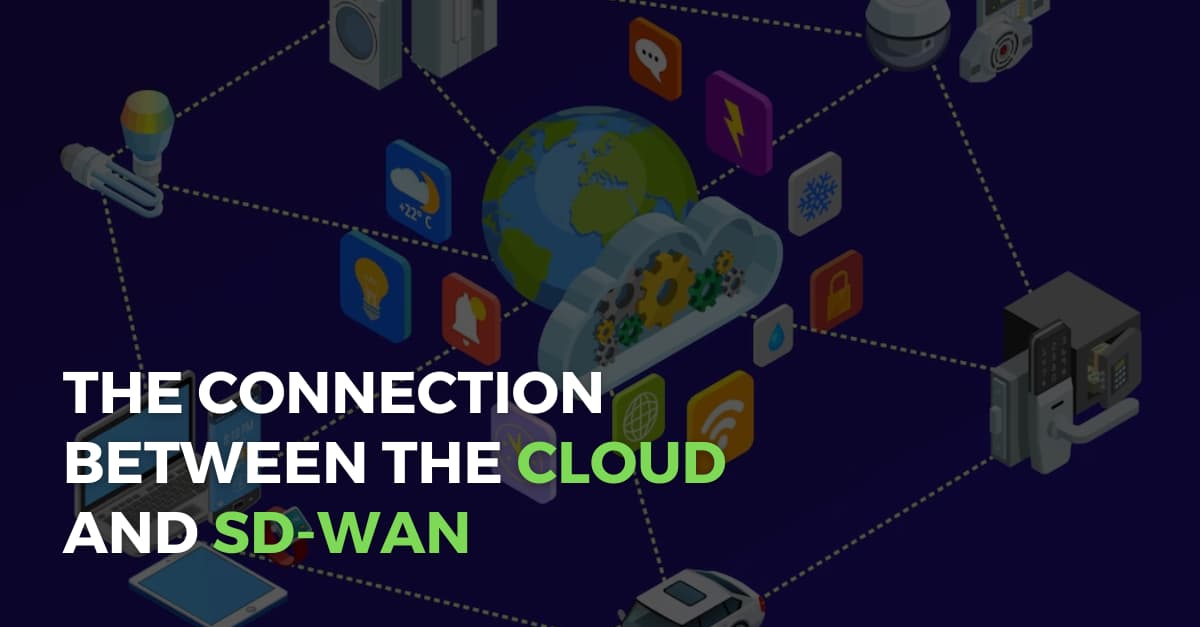The Connection Between The Cloud and SD-WAN

Moving to the cloud is an action that has gained popularity among organizations in the past years. There are numerous cloud services available on the market and we can see how this is affecting organizations and the infrastructure. We can also notice that SD-WAN architecture has also become a popular choice for many organizations.
You might be wondering how these two are connected. For example, many SD-WAN services also come with Cloud Network, and that is no coincidence. Let’s try to understand the connection between these two.
Enhanced performance
Traditional WAN architecture models have become a bit outdated if we take a look at the new app models. Therefore, when accessing apps stored in the cloud, the process will become more complicated than it needs to be, which means that bandwidth will be wasted and costs will be higher.
The rigid WAN architecture can also be a problem and organizations find it hard to manage the traditional model because processes and network changes become lengthy which is not efficient at all.
All these issues are handled by the SD-WAN solution. This technology comes with all the needed shortcuts for app consumption which means that unnecessary hops are avoided and performance is enhanced. Accessing an app stored in the cloud can be done directly, without going through a HQ data center.
More than that, the performance enhancement process becomes automated, so human intervention is no longer needed. Even when packets are lost, SD-WAN technology is able to come up with a solution automatically.
In addition to that, it is also possible to connect various WAN transport services so that a larger connection is connected. An overlay tunnel appears and it can be used to load-share traffic for a single application, enhancing its performance.
Secure
Security is improved with the help of this technology. Encrypted tunnel traffic can be used for communications between end points, which reduces the risks. It is also possible to limit the traffic that comes to the branch, so that it is constrained to the sessions that were initiated by users internally. SD-WAN (Software-Defined Wide Area Network) is a technology that enables companies to connect their branch offices and data centers securely over the internet. With SD-WAN, businesses can leverage multiple internet links, including broadband and cellular, to ensure high-speed and reliable connectivity between their locations.
Traffic steering
Intelligent traffic steering is another major advantage. Apps are being identified based on the first packet that is received. Both HTTP and HTTPS traffic insights are required for this process. Traffic is then steered on the correct link and that is done by identifying the business intent.
It is very important that traffic is steered based on the first packet and not on any other one, because this means that bandwidth won’t be unnecessarily wasted and compliance requirements will be met. We should also add that if the TCP connection is NATed with a public IP address the process can’t be reversed.
Cost Savings
By utilizing multiple network connections and optimizing traffic routing, SD-WAN can help reduce costs associated with expensive MPLS lines. This can be especially beneficial for organizations with multiple branch locations.
Scalability
As organizations continue to grow and expand their operations, SD-WAN can provide a scalable and flexible network infrastructure that can easily adapt to changing business needs.
Application-aware Routing
SD-WAN solutions can identify and prioritize different types of application traffic based on the organization's specific needs. For example, a company may prioritize voice and video traffic over email and web browsing to ensure high-quality communication.
Optimizing Cloud Performance with SD-WAN: Key Insights and Benefits
- SD-WAN, or software-defined wide area network, is a type of networking technology that allows organizations to connect their branch offices, data centers, and other network resources over a wide geographical area using software-defined networking principles.
- One of the key benefits of SD-WAN is its ability to use multiple types of network connections, such as broadband, LTE, and MPLS, to create a more resilient and cost-effective network infrastructure.
- The cloud, which refers to the delivery of computing services over the internet, has become an increasingly important part of modern enterprise IT environments.
- Many organizations are now using cloud-based applications and services, such as Salesforce, Microsoft Office 365, and Amazon Web Services, to store data and run critical business processes.
- The connection between the cloud and SD-WAN is that SD-WAN technology can be used to optimize the performance of cloud-based applications and services.
- SD-WAN can improve cloud application performance by directing traffic over the most appropriate network connection based on factors such as latency, packet loss, and bandwidth availability.
- In addition, SD-WAN can provide advanced security features, such as encryption, to protect data as it is transmitted between cloud-based applications and the organization's network.
Finally, SD-WAN can provide organizations with greater visibility and control over their cloud-based applications, allowing them to monitor performance, identify and troubleshoot issues, and optimize network resources.

A science graduate who has a keen interest to lean about new technologies and research area. With an experience in the field of data analytics and content writing, she aims to share her knowledge among passionate tech readers.